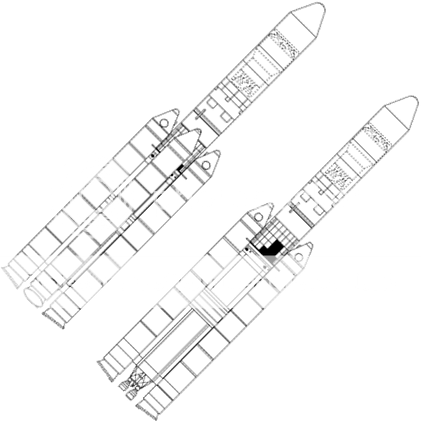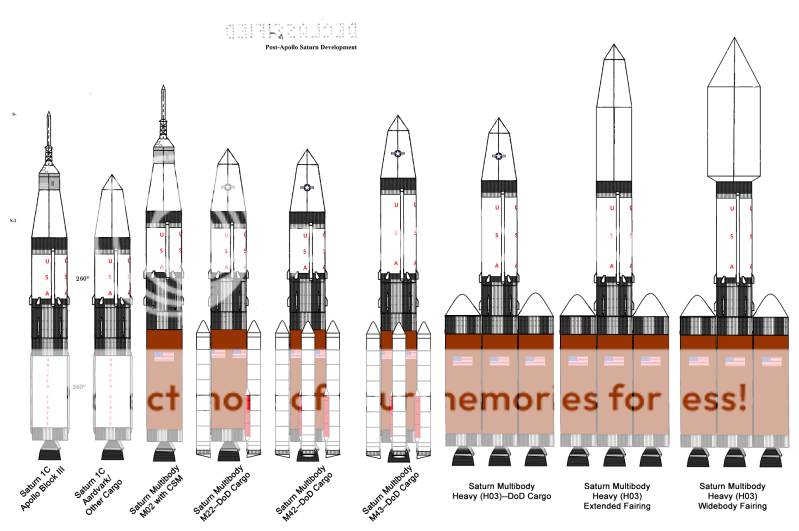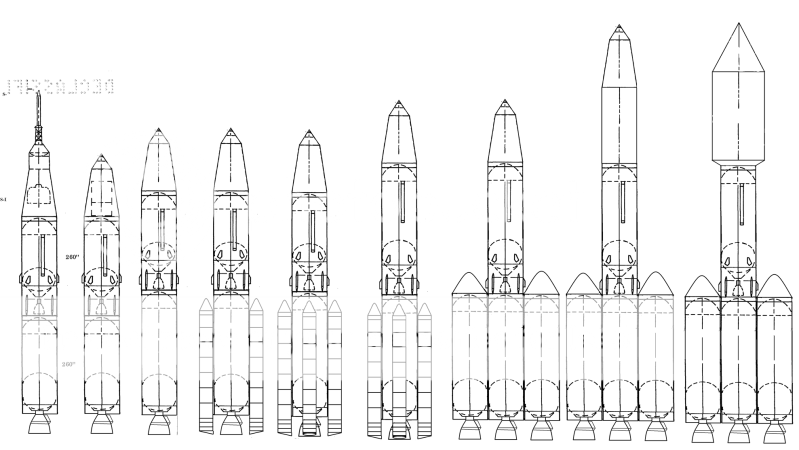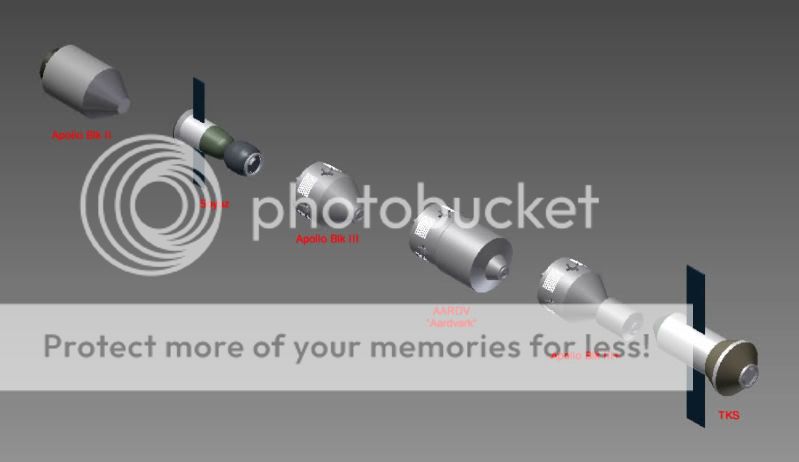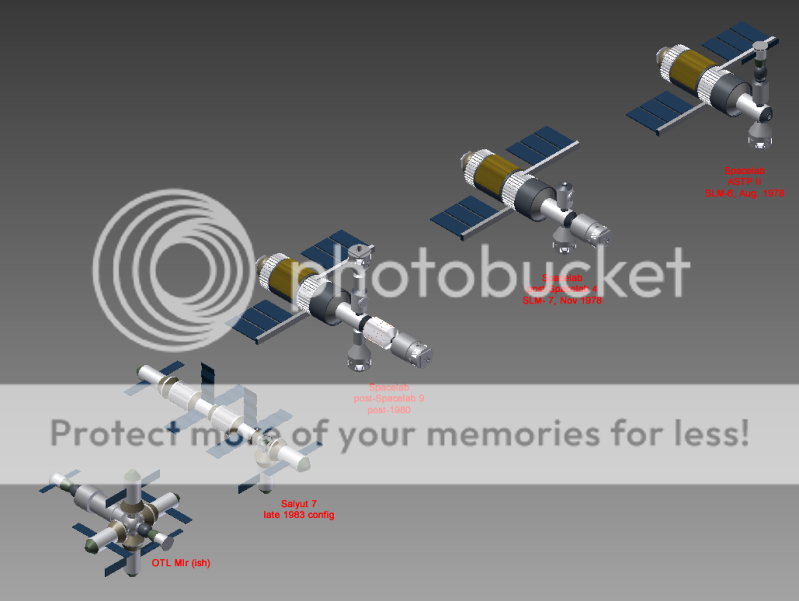Depending on your timezone, it may or may not be Wednesday, but I figured I'd make up for missing the last two weeks by posting a little early. This is sort of half of a two-part post, originally they were to be seperate but to partly make up for the slips, I'm going to finish that second part and post it as well later in the week. This first half lays out the history and goals of the ELVRP II, the other details the hardware that was submitted and the decision that was made.
Eyes Turned Skyward, Post #21
By the time the Delta 4000 made its first flight in 1980 from Cape Canaveral Launch Complex 40, the ELVRP was more than its name indicated; it was nothing less than a whole-scale replacement of the way space launch, at least in the US military, was to be thought of and used. The Delta 4000 program had itself become just a small, if important, part of a vast project. In 1981, the entire project was about to become even vaster, as Ronald Reagan began the Strategic Defense Initiative program, popularly known as "Star Wars", which envisioned providing a massive shield against nuclear weapons for the US and her allies. Thus, ELVRP capabilities (in the sense of a standardized and flexible launch vehicle) would be needed more than ever, both for the vast constellation of satellites that would detect and manage the battle against Soviet nuclear warheads, and the planned fleet of space-based weapons to destroy them. There was just one catch: The ELVRP vehicles would not actually be able to launch some of those satellites. The large chemical laser satellites, in particular, were too heavy and too large for the maximum configuration of the Delta 4000 to accommodate, necessitating additional vehicle designs. For the future, the military would require a true heavy-lift vehicle. This, naturally, drew the attention of NASA even in the early planning stages.
Almost since it had been introduced, NASA had been searching for a vehicle to replace or augment the Saturn IC. On paper a terrific rocket, with relatively low cost and high payload, in practice it had a number of (admittedly minor) flaws. It had simply proved more expensive and more problematic than planned. Many in the agency, moreover, felt that the road not taken of a "space shuttle" capable of repeatedly flying back and forth to space, needing only a little maintenance between each mission, was far superior to the practice of throwing the booster away after each flight. However, NASA's replacement programs had always foundered on the issue of cost. It would cost billions of dollars to develop a replacement vehicle, and Congress simply would not shell out the money with the brand-new (relatively speaking) Saturn IC being produced. In this environment, the ELVRP offered an opportunity NASA simply could not pass up, especially with several companies proposing to build heavy-lift variants capable of lifting between 20 and 60 tons to LEO. Given the completion of the basic Spacelab goals and the never-quite-buried desire of NASA to return to its glory days of flying to the Moon, having a military-subsidized launch vehicle that could easily launch space station components for the post-Spacelab station which was in early definitional stages or even perhaps a Moon mission was a godsend. Naturally, NASA pushed to become a member of the ELVRP II program.
Just as naturally, the Air Force and NRO pushed back. The entire concept of the program, after all, was to reduce launch costs and increase launch rates. Man-rated vehicles tended to be more expensive and have less performance than non-man-rated vehicles, and NASA would require man-rating for a Saturn IC replacement. Further, NASA tended to be viewed negatively at the Air Force, full of pointy-headed scientists with little ability to manage projects effectively (ignoring both the many successful NASA projects, sometimes born out of the most highly-pointed NASA labs, and the many failed Air Force ones), and both organizations feared possibly significant impacts to their launch schedules (especially with the many expected SDI payloads) due to NASA demand for launchers. Nevertheless, advocacy by supporters (including so-called “space state” congressmen and groups like the NSO and the Selene Group) that NASA must have access to any new heavy lifter (not to mention the additional dollars and missions that NASA could bring to the table) slowly won out. In 1981, they were added to the program as an (admittedly junior) partner. NASA would, indeed, be allowed to procure the final vehicle, and to work with the Air Force on the requirements (including those of man-rating). However, these oversight abilities were limited, and this would play a role in the final vehicle selection.
Eyes Turned Skyward, Post #21
By the time the Delta 4000 made its first flight in 1980 from Cape Canaveral Launch Complex 40, the ELVRP was more than its name indicated; it was nothing less than a whole-scale replacement of the way space launch, at least in the US military, was to be thought of and used. The Delta 4000 program had itself become just a small, if important, part of a vast project. In 1981, the entire project was about to become even vaster, as Ronald Reagan began the Strategic Defense Initiative program, popularly known as "Star Wars", which envisioned providing a massive shield against nuclear weapons for the US and her allies. Thus, ELVRP capabilities (in the sense of a standardized and flexible launch vehicle) would be needed more than ever, both for the vast constellation of satellites that would detect and manage the battle against Soviet nuclear warheads, and the planned fleet of space-based weapons to destroy them. There was just one catch: The ELVRP vehicles would not actually be able to launch some of those satellites. The large chemical laser satellites, in particular, were too heavy and too large for the maximum configuration of the Delta 4000 to accommodate, necessitating additional vehicle designs. For the future, the military would require a true heavy-lift vehicle. This, naturally, drew the attention of NASA even in the early planning stages.
Almost since it had been introduced, NASA had been searching for a vehicle to replace or augment the Saturn IC. On paper a terrific rocket, with relatively low cost and high payload, in practice it had a number of (admittedly minor) flaws. It had simply proved more expensive and more problematic than planned. Many in the agency, moreover, felt that the road not taken of a "space shuttle" capable of repeatedly flying back and forth to space, needing only a little maintenance between each mission, was far superior to the practice of throwing the booster away after each flight. However, NASA's replacement programs had always foundered on the issue of cost. It would cost billions of dollars to develop a replacement vehicle, and Congress simply would not shell out the money with the brand-new (relatively speaking) Saturn IC being produced. In this environment, the ELVRP offered an opportunity NASA simply could not pass up, especially with several companies proposing to build heavy-lift variants capable of lifting between 20 and 60 tons to LEO. Given the completion of the basic Spacelab goals and the never-quite-buried desire of NASA to return to its glory days of flying to the Moon, having a military-subsidized launch vehicle that could easily launch space station components for the post-Spacelab station which was in early definitional stages or even perhaps a Moon mission was a godsend. Naturally, NASA pushed to become a member of the ELVRP II program.
Just as naturally, the Air Force and NRO pushed back. The entire concept of the program, after all, was to reduce launch costs and increase launch rates. Man-rated vehicles tended to be more expensive and have less performance than non-man-rated vehicles, and NASA would require man-rating for a Saturn IC replacement. Further, NASA tended to be viewed negatively at the Air Force, full of pointy-headed scientists with little ability to manage projects effectively (ignoring both the many successful NASA projects, sometimes born out of the most highly-pointed NASA labs, and the many failed Air Force ones), and both organizations feared possibly significant impacts to their launch schedules (especially with the many expected SDI payloads) due to NASA demand for launchers. Nevertheless, advocacy by supporters (including so-called “space state” congressmen and groups like the NSO and the Selene Group) that NASA must have access to any new heavy lifter (not to mention the additional dollars and missions that NASA could bring to the table) slowly won out. In 1981, they were added to the program as an (admittedly junior) partner. NASA would, indeed, be allowed to procure the final vehicle, and to work with the Air Force on the requirements (including those of man-rating). However, these oversight abilities were limited, and this would play a role in the final vehicle selection.
